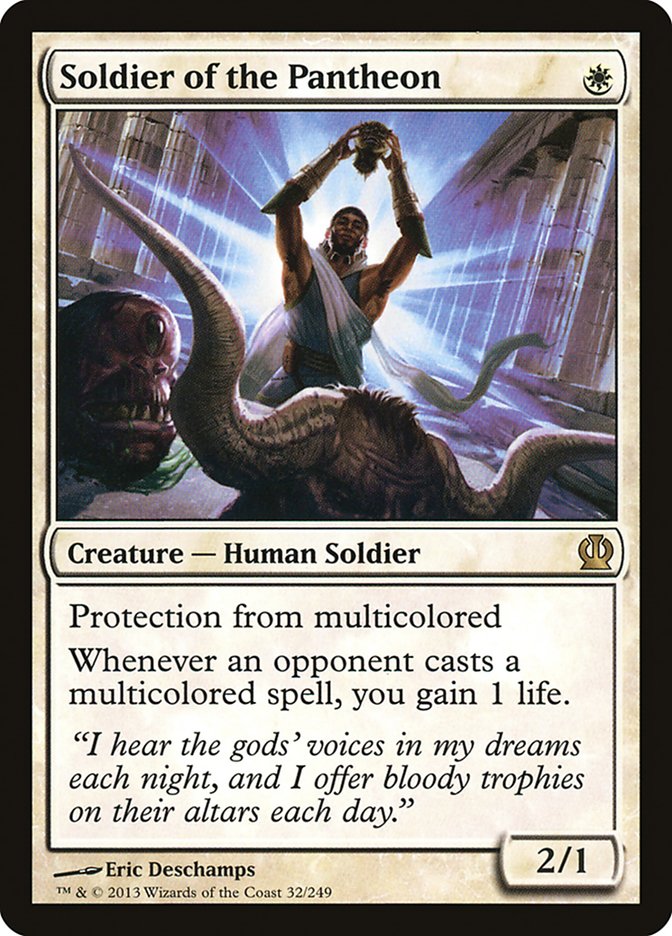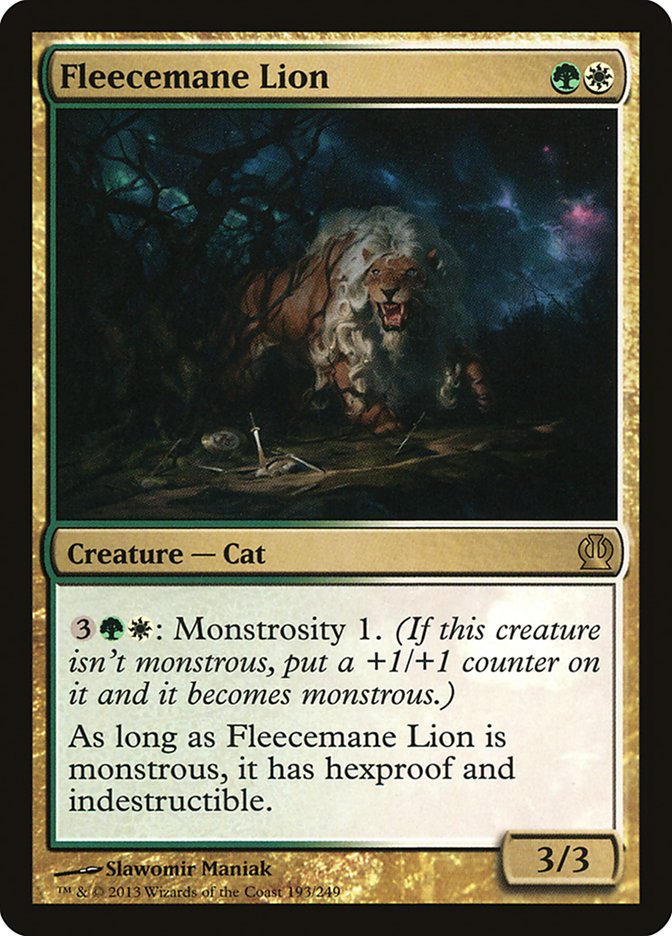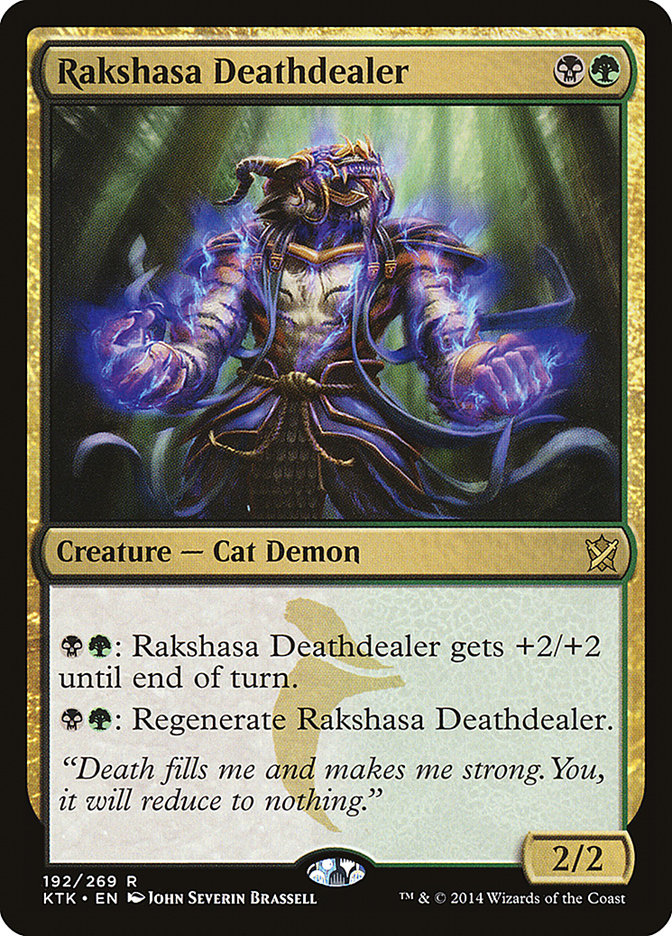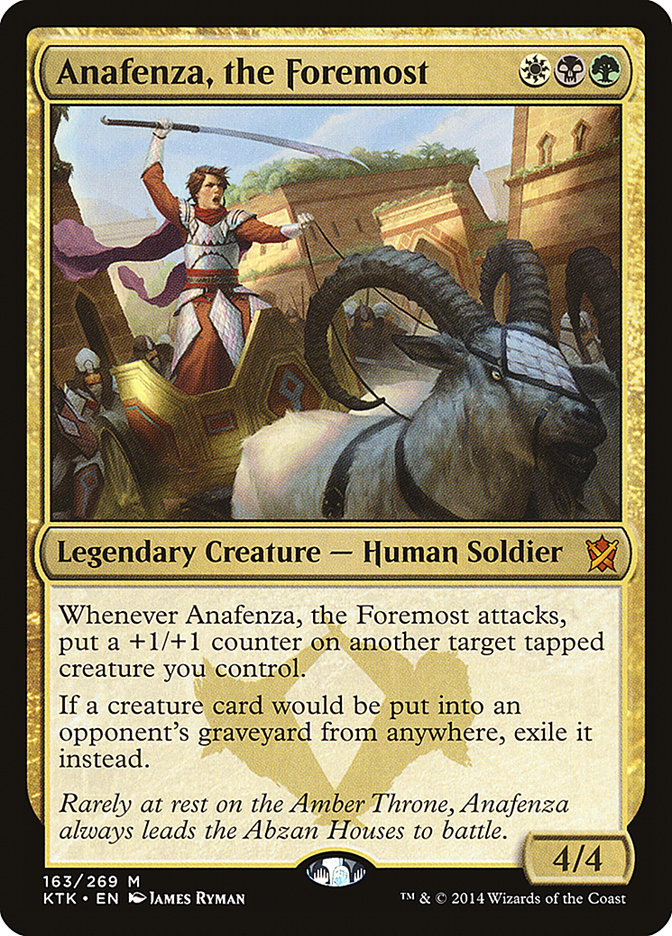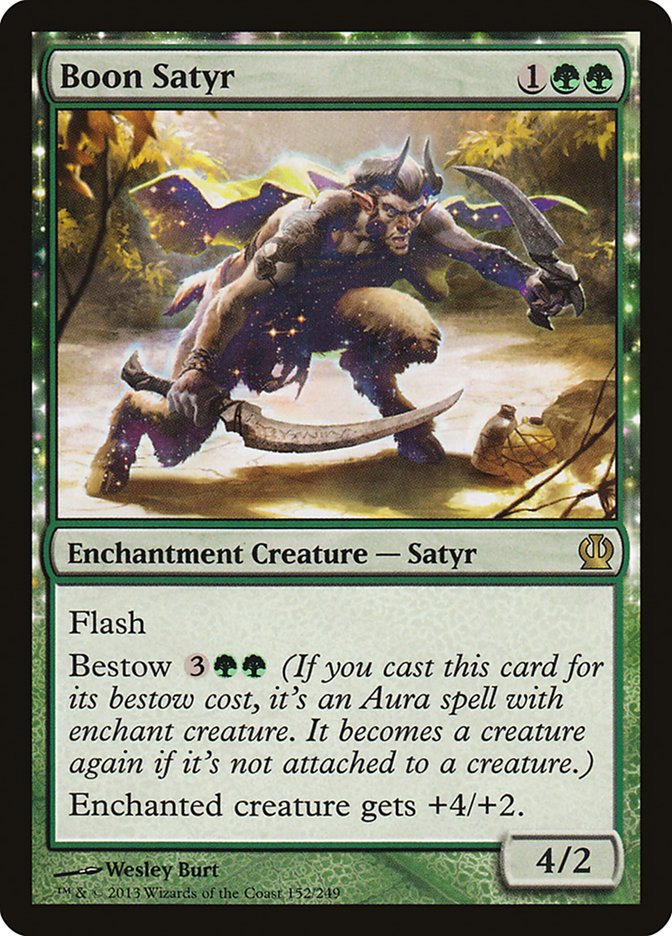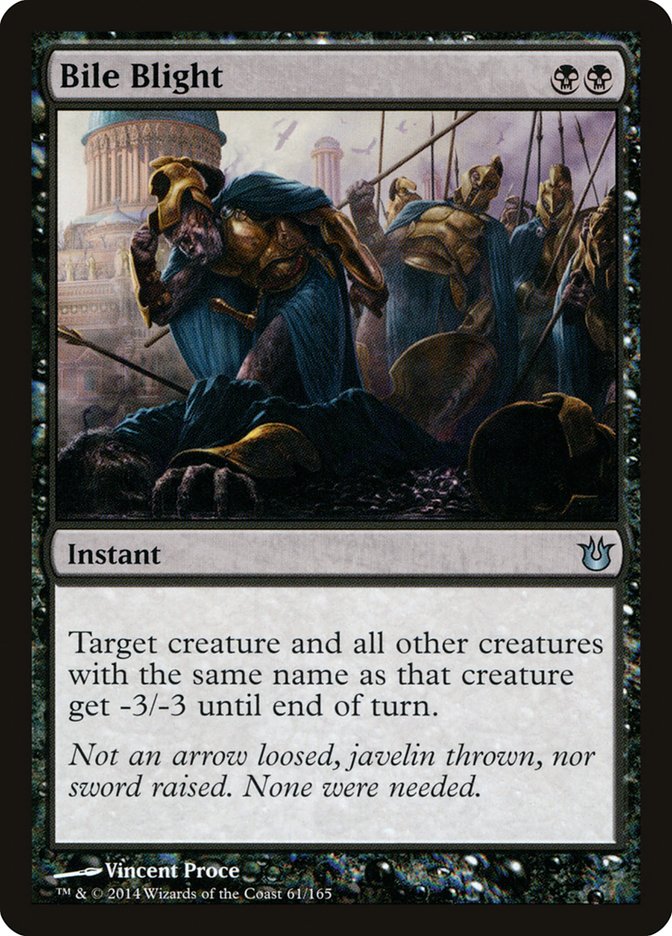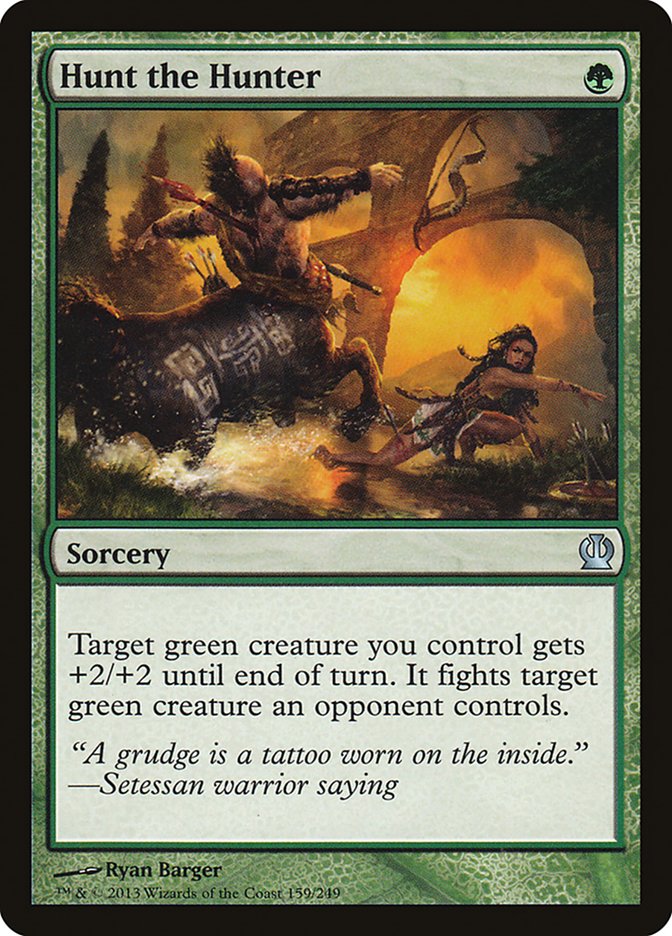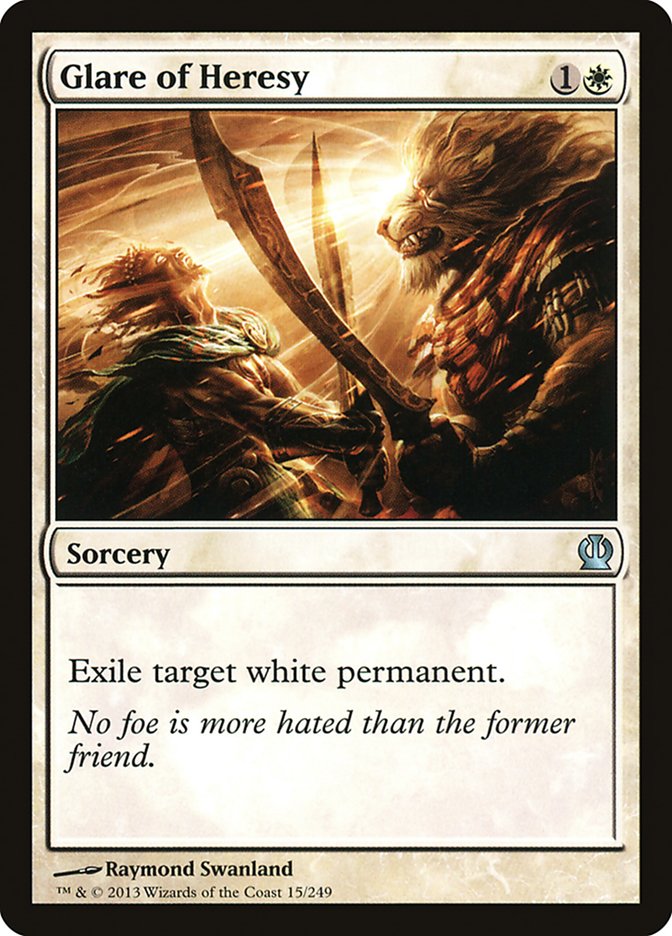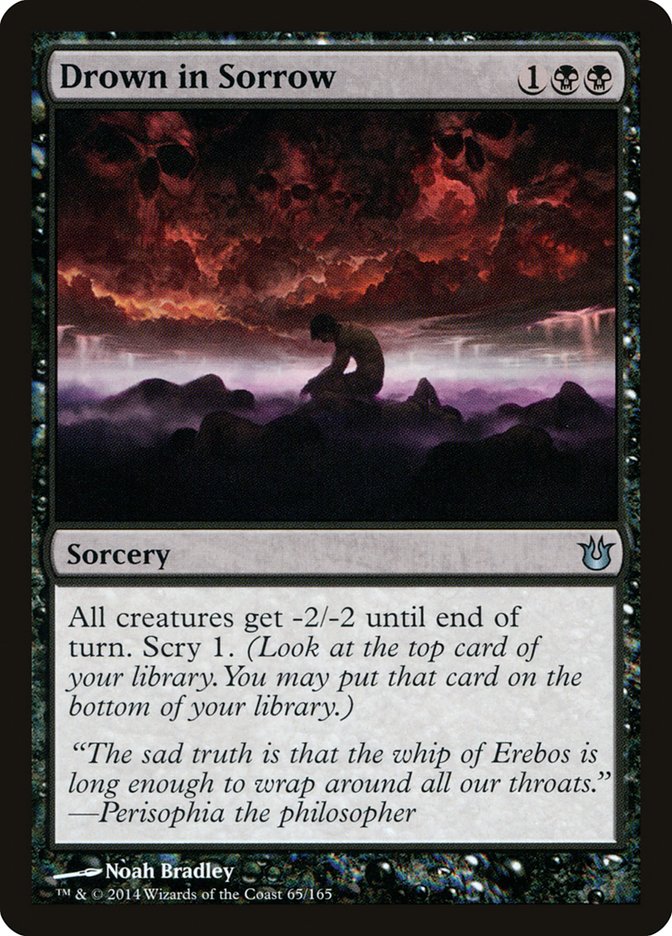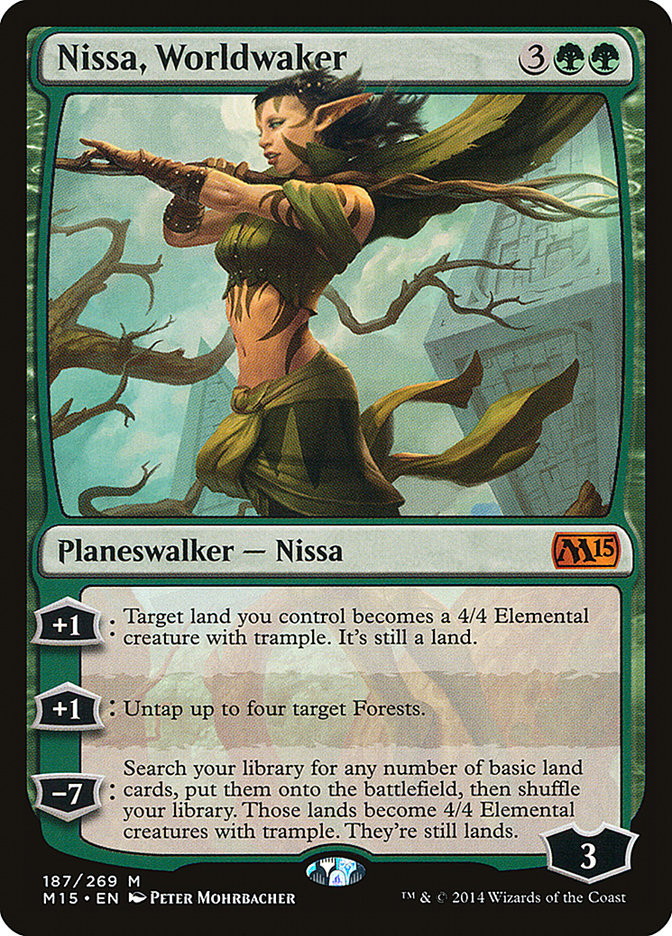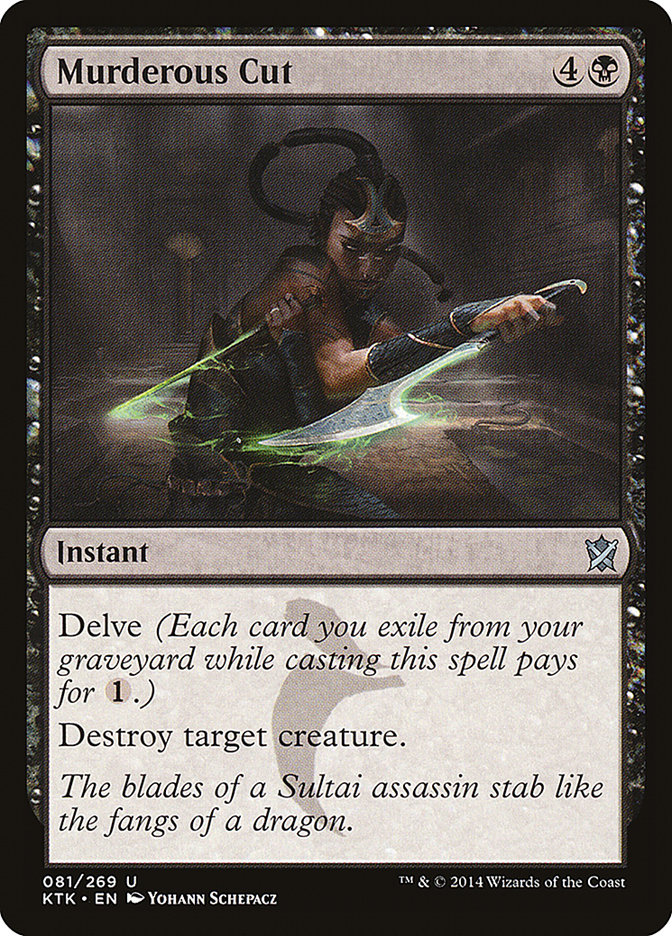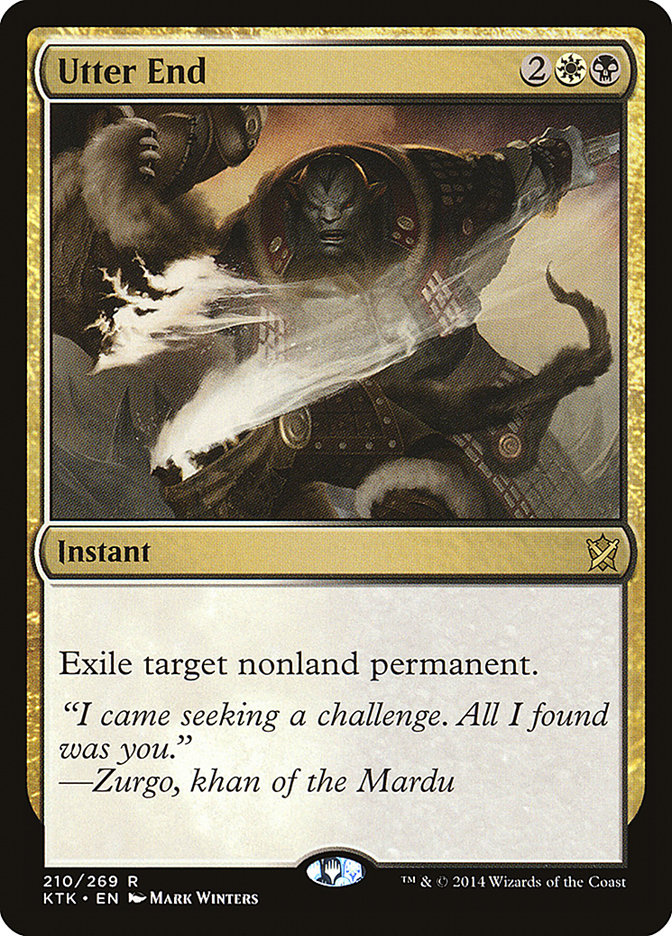Fate Reforged is changing Standard, and staying ahead of the curve is the best way to succeed. This past weekend, I clenched a top 8 finish at the Open
Series in DC by knowing how to adapt. Standard has never been more dynamic, and in this article, I will discuss my deck, how I arrived at it, why it is
great, and my specific card choices.
For those of you who are unfamiliar with me, my name is Andrew Boswell, and here are the quick details: I’m currently 15th on the Season One Leaderboard, I
have an Invitational Top 16, five Open Top 8s, two Pro Tour appearances, and a Grand Prix Top 8. I live in Sugar Loaf, New York, and I get to hang out with
all the great Magic players from NYC to Philly. When I’m not spell-slinging on the weekend, I work in my ceramic studio during the week.
If you want to know a little more, Nick Miller wrote a fantastic article, and you can find it here.
Before Fate Reforged came out, I was all-in on the big, controlling version of Abzan Midrange. The reason why is simple – Courser of Kruphix, Siege Rhino,
and removal spells were the perfect answer to the aggro decks. Thoughtseize, planeswalkers, and card advantage were the perfect threat to the control
decks. I made top 8 with the deck in Worcester during Season Four of 2014, kept tuning it, and by the end of the season my win ratio was great. My deck was
sweet, and I knew it could handle anything.
After looking at the Fate Reforged spoiler, I knew there were two cards that Abzan Midrange could not handle.
Valorous Stance is an efficient and flexible card that thwarted the Abzan Midrange’s anti-aggro strategy. It could instantly trade with the best defensive
cards for less mana. I knew I would lose any game where my opponent was able to kill my Siege Rhino, attack, and play another threat in one turn. I
expected Valorous Stance to be good, popular, and to appear in successful aggro decks.
Ugin attacked Abzan Midrange from the opposite angle. Instead of efficient and flexible, it was an overwhelming topdeck that could bring down my
planeswalker house of cards. Almost all of Abzan’s card advantage comes from board presence, and Ugin could easily wipe it out. I also expected this card
to be good, popular, and appear in successful control decks.
I wanted to match converted mana cost with the aggro decks and pressure the control decks more quickly. I loved Abzan Midrange, but I shifted to Abzan
Aggro so that I could be more efficient. Here’s what I wound up with:
Creatures (25)
- 4 Fleecemane Lion
- 2 Boon Satyr
- 4 Soldier of the Pantheon
- 3 Anafenza, the Foremost
- 4 Rakshasa Deathdealer
- 4 Siege Rhino
- 4 Warden of the First Tree
Lands (24)
Spells (11)
Sideboard

This Abzan Aggro deck has some very strong selling points.
Firstly, the deck is fast and is able to press its advantage. Playing a one-cmc creature when other people have nothing until turn 2 or 3 is like starting
the game with a Time Walk. Once you establish a board presence, you have so many activated abilities and instants that your opponent can’t hold you back.
Secondly, the creatures are among the best on the curve and get better with more land drops. In one match on camera, my opponent had a Nissa, Worldwaker
and pair of Wingmate Rocs, but they folded to my Warden of the First Tree. After sinking mana into it for a few turns, the Warden became an unstoppable
13/13 with trample and lifelink!
Third, the Abzan removal is never blank. To survive the die roll, you need a good defense and that means a healthy amount of removal. The fact that both
Abzan Charm and Valorous Stance are still worth a whole card against a control deck makes pre-board games against every archetype much better.
Fourth, the mana is better than you think, and Mana Confluence is great. When you are casting cards like Rakshasa Deathdealer and Anafenza, the Foremost,
there isn’t a difference between how much damage you take from Llanowar Wastes and Mana Confluence. As soon as you cut some painlands for Mana Confluences,
you can cut Temples for basic lands; untapped mana really helps you come out ahead.
Finally, the last perk of the deck is postboard games. Abzan Aggro gets all the good sideboard cards. Thoughtseize and Nissa are the two best weapons
against Ugin. Drown in Sorrow and Glare of Heresy are the two best weapons against aggro decks. You have access to Hunt the Hunter, enchantment removal,
black removal, and you can choose how aggressive you want to be.
This deck really has it all: good creatures, good spells, good mana, good sideboarding, a flexible gameplan, and you can still win when you are stuck on
two lands or flooding out. It isn’t done evolving either. There are so many good cards in the Abzan colors, and you can customize the deck to crush any
metagame. I highly recommend using my list as a starting point, but feel free to experiment. Customize it just right, and you may be the one top 8ing the
next SCG Open.
Before I cut you loose and let you wreak havoc on my list, I need to say a few things about the cards so you know why they were there in the first place.
This card was in the maindeck for two reasons: I thought I would face a lot of two-color aggro where it could play defense, and it is exceptional in the
mirror. It isn’t very good versus Caryatid + Courser decks, but it still fits the overall gameplan of efficient pressure. You can actually see on camera
when I was against BBD, that even though I was stuck on one Plains and one Forest, I was able to apply enough pressure to win the game. For these reasons,
I played Soldier in the maindeck, but it might have been a mistake. I expected the R/W Aggro decks to play more one-drops, Akroan Hoplites, and Ride Downs.
Instead they were more token-based, and whenever I had Soldier it was embarrassing. If you want to make room to try a new card, I would start by cutting
Soldier, but don’t forget about it.
Warden was a skeptical addition. I wasn’t able to test it very much, and I needed it to be good when I showed up to the tournament. While it wasn’t
exceptional, it did win me games. In a deck like this where you want to be aggressive but you aren’t the absolute fastest deck, you need your creatures to
be relevant against bigger decks, but to also play defense against smaller decks. Warden ended up being exactly what I needed and was a solid contribution
to having a powerful early and lategame.
These two cats are really similar and are the cornerstones to early and continued aggression. On turn 2, they are as good as it gets; and later, they can
fight cards much higher up on the curve. When you run out of spells to cast, their activated abilities keep you in the game, and they’re resilient to
topdeck removal.
There isn’t a whole lot to say about these two cards that isn’t obvious. They are very powerful and kill your opponent very quickly. As soon as they start
attacking, you’re probably winning.
This is the best trick in the deck. If you use it well, it can generate card advantage, counter removal spells, help you play around sweepers, and steal a
game on its own. There is a lot of play to how you can use Boon Satyr, but it comes at a pretty expensive mana cost, and it can become predictable.
Unfortunately, it is only good when you are being aggressive, and it is the only double green card in the deck. Two cards that I strongly considered
playing in this slot were Herald of Torment and Sorin, Solemn Visitor. I am happy I played Boon Satyr, but I would consider these other cards for your
local metagame. Herald is great if you expect a lot of Elspeths, and Sorin is great if you expect burn heavy aggressive decks.
This is the card that makes the deck good. I couldn’t have won my feature match against eventual champion Gerard Fabiano if I didn’t make my Fleecemane
Lion indestructible when he cast Crux of Fate to sweep my board. Later in the swiss rounds, I couldn’t have won my feature match against BBD if I didn’t
have a two mana removal spell to deal with his big green creatures. This card does everything for a very reasonable casting cost.
The versatility of having one card that can add power/toughness, draw cards, or clear blockers cannot be understated. Exiling is also particularly relevant
when you suspect your opponent has a defensive Valorous Stance, and it is your only out to cards like Sarkhan, the Dragonspeaker or Pharika, God of
Affliction. Choosing which mode to use can be a true test of skill, and during the final swiss rounds I had a very interesting decision.
I had a turn 2 Fleecemane Lion and my opponent had a turn 3 Anafenza. On my turn 3, I could use Abzan Charm to exile the untapped Anafenza, but instead I
chose to attack first. There was a small chance my opponent would not block, and I could save my Abzan Charm. If my opponent did block, which he did, I
could use my Abzan Charm as a pump spell to kill his Anafenza. This way I missed three damage, but as a 5/5, I made my Lion immune to Bile Blight and large
enough to push through any creature my opponent could play on the following turn. My Lion ended up dying immediately, but it was an interesting decision
point.
This truly is your best card against any deck that is trying to kill you with creatures. When I talk about early defense, I’m talking about this card
specifically. Bile Blight always has utility as a combat trick against large creatures, is an out to Elspeth, and you can sometimes even use it to counter
an opposing Valorous Stance or Abzan Charm. The double black casting cost is the only reason I didn’t play four, but Patrick Sullivan suggested that I add
a second Urborg. This would easily allow the deck to play a full playset of Bile Blights, and his idea might just be great. Having a second Urborg comes at
a cost though. Drawing two is obviously bad, but they can also help your opponent. In the swiss, I beat Gerard Fabiano partly because he took a lot of
damage off his lands. If I played an Urborg, I might have helped him stay alive.
Whenever I describe Hunt the Hunter to someone, the word “vicious” always comes to mind. There is no better way to crush your opponent’s soul than to kill
their Polukranos for one mana, deal extra damage, and play an additional threat on turn 4. When this card is good, it is the most vicious tempo play you
could ask for. It shines against green devotion decks but can also have applications in Abzan mirrors where your opponent is going to be tapped out on
their turn.
This is another potent sideboard card and is what allows you to avoid playing Hero’s Downfall. Against larger Abzan decks, you need to kill everything and
their planeswalkers. Why pay three mana when you can do it for two? It also answers Soulfire Grand Master, Monastery Mentor, and Jeskai Ascendancy which
all tend to travel together and are the only permanents you need to answer in the matchup.
This card is great against Whip of Erebos decks, Constellation decks, Jeskai Tokens, and all the small aggro decks. I would never leave home without Drown
in Sorrow. If people every stop playing this card, you will see me playing R/W Aggro immediately.
Thoughtseize gets thrown into the maindeck too often in my opinion. For this iteration of Abzan Aggro, I only wanted Thoughtseize against sweepers and
Ugin. I expected many of my games to end with cards in my opponent’s hand, and that was best achieved when my deck focused on board presence rather than
one-for-ones. I could easily see Thoughtseize in the maindeck, but I did not want it for week one, and you probably don’t want it if your local metagame
has a lot of aggro.
Going into the tournament, I was pretty confident that Nissa was the best card against control. Planeswalkers are generally good versus sweepers, and Nissa
is also great versus Ugin. Unfortunately, she might just be too expensive. Nissa’s earliest damage doesn’t come until turn 6. The five mana is not only bad
because it is slow, but having Nissa in your hand might mean you are missing a two-drop on your opening curve. Also, tapping out can be bad when you have
Fleecemane Lion, Rakshasa Deathdealer, or Valorous Stance. I’m not sure what to play in her place and maybe she still deserves a spot, but my experience
with her at the tournament was pretty mediocre.
These were in my sideboard just to round things out. Generally speaking, I think Utter End is just too expensive, and Murderous Cut is rarely better than
the other removal I’m already playing. It always makes players feel safe to have a card that answers their opponent’s big thing, but you have to make sure
you aren’t playing too fair. In my opinion, a four-mana removal spell is way too fair. I want to spend one mana to kill my opponent’s Polukranos, and you
should too.
There are a ton of good cards you can play in this deck, and now you know why I played the ones I did. I intend to continue playing it in the current
iteration until I start losing. I don’t know where this deck will go, but I hope it goes in the same direction the Jund deck did when Bloodbraid Elf was in
Standard. That deck led to my first GP cash and some of the most fun Magic of my life. I’m very confident Abzan Aggro will be a top contender. The cards
are just too good and too well-rounded. Best of all, there are a lot of good card choices, and we get to spend the whole season trying them all out.
Pick this deck up, and play around with it. You will have a very good time.



